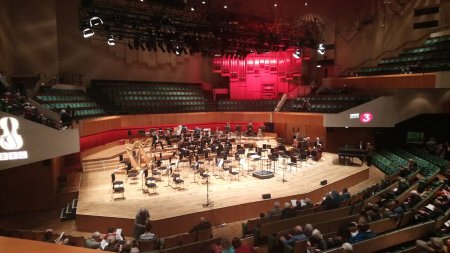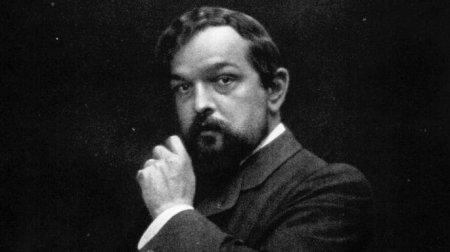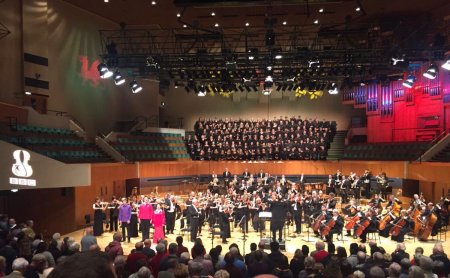With Cardiff likely to be in the grip of Olympic Torch fever I decided yesterday to avoid the crowds as much as possible and take in a bit of culture in the form of a concert at St David’s Hall. My usual route into work being blocked by the closure of Bute Park to the public I walked into the city centre, paid in a few very welcome royalty cheques at the bank, and went to St David’s in person to book a ticket. I had no problem getting a good seat, but the staff issued dire warnings about getting here in good time for the 7.30 start as the Olympic Torch would be passing right in front of the venue just before the concert.
Despite the crowds I reckoned I had time for a quick pint (or two) in the Poet’s Corner before kick-off. Walking there from my office I saw a few people on Newport Road waiting for the Torch and its entourage, but not all that many. While I drank and chatted with a couple of PC regulars, the noise of a helicopter circling announced the arrival of the flame in our vicinity. I was almost tempted to pop outside for a look, but although the Olympic Torch was outside, the beer was inside and a man must have priorities in life.
So about 6.45 I headed off towards St David’s Hall. There were people out and about, but no more than you’d expect on a sunny Friday evening. Traffic had already re-started and disruption seemed fairly minimal. I don’t know where the Torch had got to by then but I arrived at the Hall at 7.00 to find a crowd watching it on the Big Screen in the Hayes. I went straight in and had a nice glass of wine.
When I got into the auditorium for the evening’s concert I was a bit taken aback, not only by the huge size of the orchestra (particularly the brass section) but also by its unusual arrangement: the strings were divided in two, arranged more-or-less symmetrically with cellos and basses to far left and far right. I was also initially perturbed that my favourite handsome violinist was not in his usual place, but I soon located him and all was well with the world.
The concert, featuring the BBC National Orchestra of Wales conducted by associate guest conductor Francois-Xavier Roth, was broadcast live last night on BBC Radio 3, incidentally, and you can listen to a recording here.
The unusual orchestral arrangement was needed for the first piece of the concert, called Sound and Fury, by contemporary French composer Philippe Manoury. This is a work that’s full of contrasting moods, set against an overall concept relating to the battle between order and chaos. Passages in which stable melodic lines can be identified evolve into savage cacophony and back again; there are also sequences where the two halves of the orchestra act as two independent forces, challenging and responding to each other across the stage. Not exactly easy listening, but fascinating nonetheless.
After the interval we had the two “main pieces” of the evening, played by a more conventional orchestral line-up. First was the First Violin Concerto by Dmitry Shostakovich with soloist Daniel Hope (dressed, I have to say, in a horrible shiny suit). The open movement, entitled Nocturne, is striking for its lightness, and the apparent simplicity of its singing solo lines. The second movement Scherzo, darker and more intense, is followed by a wonderful slow movement marked Passacaglia, the end of which is marked by a fiendishly difficult solo cadenza that bridges into the final Burlesque. Daniel Hope played it with great verve and confidence, but in the context of the overall work I found it a bit gratuitous. Still an impressive piece, though, with many of the hallmarks of Shostakovich’s great symphonies.
The last piece was Images pour Orchestra by Claude Debussy. While the preceding Shostakovich work is perhaps a symphony masquerading as a suite, Images is definitely not a symphony. It’s a series of impressionistic and enigmatic vignettes of very differing mood. It’s in three movements, but the central one is itself divided into three distinct parts, so it is really five movements. The opening one includes, to my surprise, the Northumbrian tune The Keel Row and there are references to Spanish and French folk songs later on. The whole impression you get listening to this work is similar to walking through an art gallery looking at paintings that relate to each other in some ways, but contrast in others, or perhaps reading an anthology of poems by different poets.
Three different works from the 20th century, each with a very characteristic voice of its own and each with much to enjoy made for an absorbing concert. St David’s Hall was rather sparsely populated – the Cardiff audience is notoriously conservative in its musical tastes, and the Olympic Torch business wouldn’t have helped – but those that had made the effort were extremely appreciative at the end.
Having got my musical fix for the week I headed home. It must have only been about 9.45, but the concert in Bute Park seemed to have ended already. The city was busy, but not unusually so. The barricades had gone, and the buses were running again. I walked home through Sophia Gardens in the deepening twilight and saw a bat flying nimbly in silhouette against the crescent moon. Whatever happens in the future, that Image will be a treasured memory of Cardiff.



